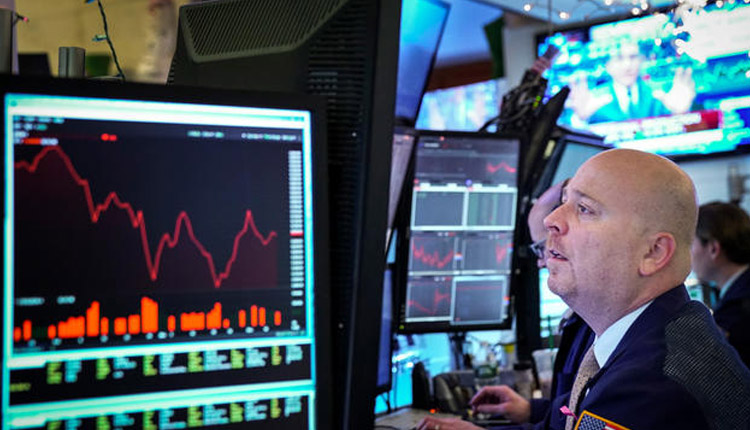On Friday, U.S. stocks jumped amid renewed optimism on the progress of trade talks between Washington and Beijing as Wall Street wrapped up a stellar quarter. Dow Jones Industrial Average closed 211.22 points higher at 25,928.68 as Boeing, UnitedHealth and Caterpillar outperformed.
The S&P 500 advanced 0.7 percent to 2,834.40, led by the industrials and health care sectors. The Nasdaq Composite climbed 0.8 percent to 7,729.32.
CarMax was the best-performing stock in the S&P 500, rallying 9.5 percent on strong earnings. Sentiment was also lifted by Lyft, as the ride-sharing company surged more than 8 percent in its first day of trading.
U.S. officials said China had made proposals on a range of issues that go further than it has before, including on forced technology transfer.
Treasury Secretary Steven Mnuchin also said on Friday he had a “productive working dinner” with Chinese trade officials the previous night in Beijing, as both sides restart negotiations with the hope of bringing an end to their protracted trade dispute.
The world’s two largest economies have imposed tariffs on billions of dollars’ worth of one another’s goods over the past year, battering financial markets and souring business and consumer sentiment.
“There is still some upside for the market” on the trade front, said Arian Vojdani, investment strategist at MV Financial. “That shadow still looms over this market. You see a lack of conviction in the market when it comes to any type of outcome because there is so much back and forth on that.”
“If we see a good headline come out of that, I think we will get a near-term bump,” Vojdani said. “Will that translate into the long-term? That’s hard to say because, regardless of whether a trade deal is struck, we’re seeing a slowdown in both China and the U.S.”
Chinese stocks surged overnight. The Shanghai Composite gained 3.2 percent overnight to lead stock indexes in the region. In the U.S., trade bellwethers Caterpillar and Boeing were both up more than 1.8 percent.
Friday’s gains added to the strong performance from the quarter. The S&P 500 surged 13.1 percent for the period, its biggest quarterly gain since the third quarter of 2009. The broad index also had its best first quarter since 1998.
The Dow climbed 11.2 percent this quarter — its best start to a year since 2013 — while the Nasdaq is on pace for its biggest quarterly gain since the first quarter of 2012, rising 16.5 percent.
This quarter’s rally is characterized by three factors: a sharp rebound off the Christmas Eve lows, increasing optimism in U.S.-China trade talks and a sharp reversal in the Federal Reserve’s monetary policy stance.
“The irrational moment of December was just that, a moment driven by tax selling, algorithms and people being extremely emotional about the headlines,” said Phil Blancato, CEO of Ladenburg Thalmann Asset Management. But “while December was oversold, January and February were overbought. The reason why is, while stocks got cheap for a brief amount of time, the economy is not strong enough to drive a 12 percent return on the stock market in an environment like this.”
Concerns over a possible economic slowdown have thrown some cold water on the rally as global economic data continue to deteriorate. This has pushed down bond yields across the world.
Recently, the Treasury 10-year note yield hit its lowest level since December 2017 and moved below its 3-month counterpart for the first time since 2007. This is known as a yield-curve inversion and investors see it as a sign that a recession may be on the horizon.
“When you look at the full quarter, the thing that stands out the most is the divergence in the direction of the stock markets across the world and the direction of the 10-year bond in the U.S. and in other countries,” said Tom Martin, senior portfolio manager at Globalt. “The data is poor. Interest rates have gone down as a reflection of that and expectations for future economic growth have also declined.”
The Atlanta Federal Reserve’s GDPNow tool forecast economic growth of 1.5 percent for the first quarter, well below the 2.2 percent print for the fourth quarter of 2018.
Earnings growth for the first quarter is also expected to be lackluster. FactSet data show analysts expect first-quarter S&P 500 earnings to fall by 3.7 percent on a year-over-year basis. Data from The Earnings Scout show analysts expect earnings growth to recover in the later quarters of the year, however.
Linda Duessel, senior equity strategist at Federated Investors, is still not worried, however.
“There is no reason to believe we won’t experience a so-called soft landing in the economy, particularly if the Fed is at bay,” Duessel said. “The bottom line is, if we can get to the end of the year and say inflation is benign and the Fed is still at bay, then I can say with some confidence, there is no recession on the horizon. This will be by August the longest economic cycle in the history of the land and will continue for longer than many people think.”
Source: CNBC
